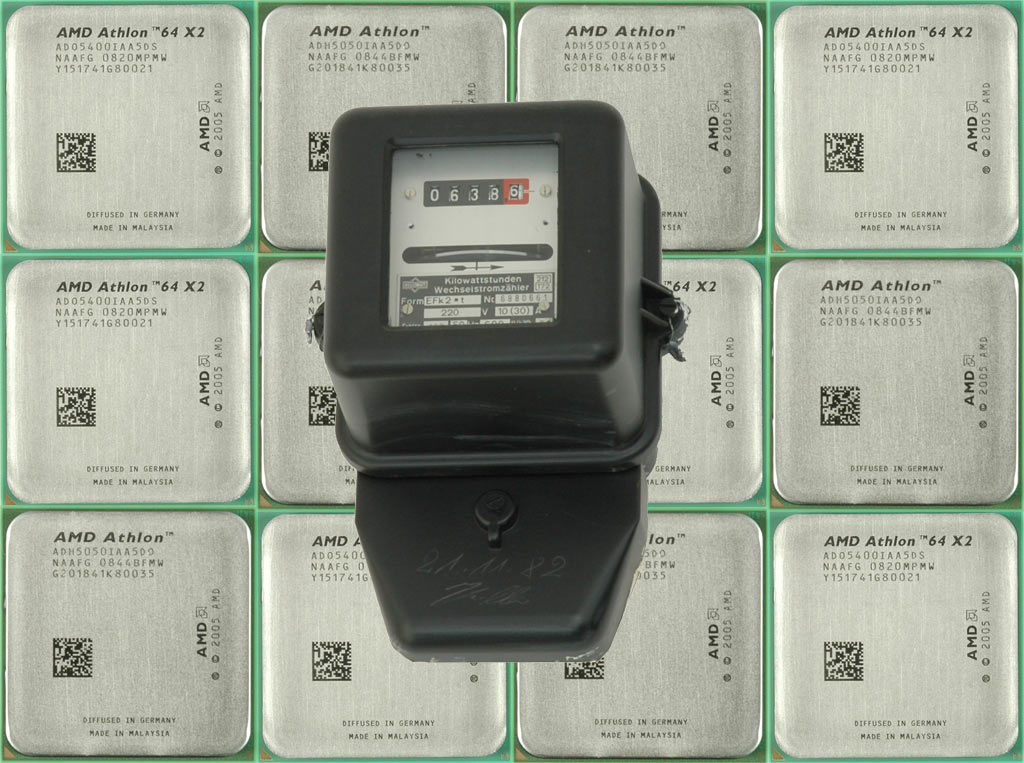Low-Power Face-Off: AMD's Athlon X2 Vs. Intel's Core 2 Duo
What is Left from AMD’s Low Power Advantage?
AMD, which dominated the processor market with its Athlon 64 and Athlon 64 X2 just a few years ago, was able to make a return with the recent Phenom II processors. While these new 45 nm CPUs cannot trump Intel's Core i7, they offer performance that can match a Core 2 Quad here and there. Unfortunately, there is no low-power version available yet, so we decided to look at AMD’s remaining low-power option.
The latest Athlon X2 dual-core CPUs are very affordable, and supposedly efficient. Our shootout includes an Athlon X2 5050e (45 W TDP) and a 5600+ (65 W TDP) as well as several Intel processors.
Low Power Versus Efficiency
Power users will certainly focus on performance first, while all other users want to have the best of both worlds: a fast processor that does not consume more power than necessary.
Performance is easy enough to define. It is the time required for a workload to complete, or workload execution within a given time. However, efficiency is still sometimes misunderstood, because efficiency does not equal low power. A low-power device such as Intel’s Atom processor has low power consumption, but it is far from being efficient.
We define efficiency as the power that is required to complete a specific workload. In this case, power is measured in Watt-hours (this isn’t watts per hour, but watts times hours). Some readers had noted that work energy should be stated in joules. One joule equals one watt-second, so a watt-hour equals 1 x 60 x 60 = 3,600 joules. We decided to stay with Watt-hours (Wh), as this is the way we are charged for electricity.
CPU Power Versus Platform Power
Get Tom's Hardware's best news and in-depth reviews, straight to your inbox.
On the CPU side, AMD has traditionally had two advantages over Intel. First there is the SOI manufacturing process (at 90, 65, and 45 nm), which ensures low power requirements in idle mode thanks to low leakage power. This makes it very much competitive with Intel’s manufacturing, which has typically been 12-18 months ahead of AMD with regards to transistor size (note that AMD processor manufacturing is being outsourced). Second, AMD processors have come with integrated memory controllers since the introduction of the Athlon 64 in late 2003, which typically provides a power consumption advantage over logic that is part of the Intel chipset. Core i7 has started to introduce a paradigm change in this direction with Intel, but that doesn’t apply to Core 2.
So there is the platform, which contributes to power consumption. Especially if you look at all-in-one integrated chipsets such as the AMD 780G, AMD has offered much better 3D performance and power efficiency than Intel chipsets. We used an integrated AMD 780G motherboard as well as an Intel board based on the latest G45 chipset for this article, as well as two representative AMD processors, two Intel dual-cores chips, and two Intel low-power quad core CPUs.
What To Expect?
AMD’s Athlon X2 processor is a rather aged product and cannot compete with any of the Core 2 processors in terms of performance—this is a given. So don’t take this article as a performance shootout, but rather as it was intended: a look into the efficiency of AMD’s low power / low budget offerings, since the AMD Socket AM2+ platform still provides a great basis for office systems in the value range. In the end, performance is still many times better than what you’d get from an Atom nettop. In light of $299-399 netbooks, it makes a lot of sense to consider a low cost PC instead, as you can easily stay below $500 even with a reasonable display.
Current page: What is Left from AMD’s Low Power Advantage?
Next Page Low Power: AMD Athlon X2 5050e (45 W TDP)
